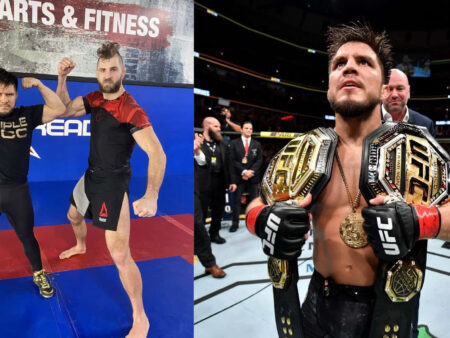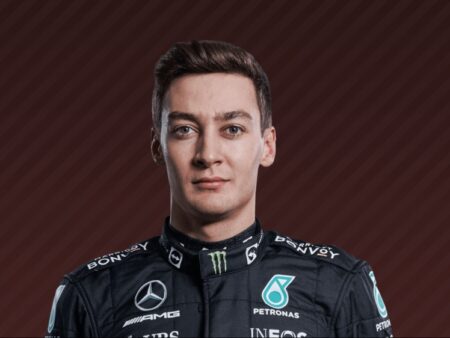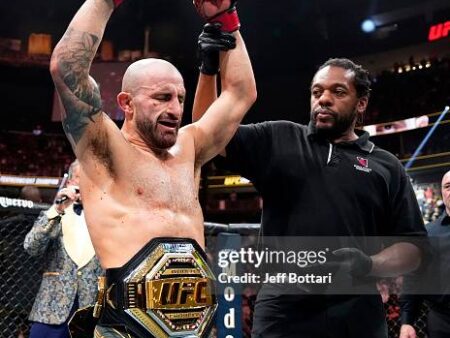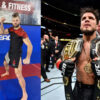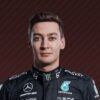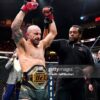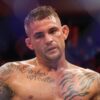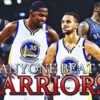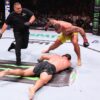The NBA has long been a league defined by its titans. For over a decade, the narrative threads of professional basketball have been expertly woven around two colossal figures: LeBron James and Stephen Curry. These living legends, now 40 and 37 respectively, have not only dominated on the court but have also been the undisputed commercial and cultural faces of the league. Their jerseys adorned fans worldwide, their social media presence eclipsed all others, and their duels in the Finals became the stuff of legend. Yet, as with all epic sagas, a new chapter is on the horizon, prompting a pivotal question: who will inherit the throne and become the next face of the NBA?
A subtle but significant tremor in this long-standing hierarchy recently occurred in 2025. For the first time in 11 years, neither James nor Curry topped the NBA`s jersey sales chart. The new king of merchandise? Luka Doncic, fresh off a blockbuster trade to the Los Angeles Lakers. This shift, while seemingly minor, signals a deeper transition within the league. The baton, traditionally passed with a blend of preordained destiny and unexpected brilliance, is now poised for a new recipient. But unlike previous eras, where a clear successor often emerged, the path forward is a fascinating tapestry of diverse possibilities.
The `Chosen One` Path: Anointed from Birth
LeBron James`s ascent to superstardom was less a climb and more a coronation. Dubbed “The Chosen One” on a national magazine cover at just 17, his trajectory was meticulously predictable: No. 1 pick, Rookie of the Year, All-Star, MVP, champion. He transcended market limitations, his every move a national event. This path demands not just immense talent, but a narrative that resonates deeply with the public, a sense of predestined greatness that few can truly embody.
Today, the most prominent candidate to walk this hallowed ground is Victor Wembanyama. Touted as the most generational prospect since James himself, Wembanyama has, through two seasons, only reinforced this lofty expectation. His unparalleled physical gifts, combined with an insatiable work ethic and a nuanced understanding of the game, position him uniquely. His ability to captivate audiences off the court could allow him to break free from the constraints of San Antonio`s market size, much like James did in Cleveland.
However, Wembanyama`s path isn`t without its historical hurdles. The NBA has not had a true “face of the league” big man since the era of Bill Russell and Wilt Chamberlain in the 1960s. Perimeter players tend to be more relatable, more demonstrative, and often more marketable. Furthermore, Wembanyama would be the first international player to achieve this global icon status. While the league is undeniably internationalized — with stars like Nikola Jokic, Shai Gilgeous-Alexander, Luka Doncic, and Giannis Antetokounmpo dominating the contemporary landscape — none have yet fully seized the singular “face” mantle. Yet, with a talent so prodigious, even his peers acknowledge his destiny. As Anthony Edwards mused when asked about his own candidacy, “No, not really. That`s what they got Wemby for.”
The Electric Shooting Guard: Jordan`s Heirs
For many, the quintessential “face of the NBA” is an athletic shooting guard—a relentless scorer capable of breathtaking dunks, impossible jumpers, and acrobatic finishes. Michael Jordan defined this archetype, and Kobe Bryant masterfully carried the torch after him. This path requires not just skill, but an inherent swagger, a competitive fire, and an undeniable flair for the dramatic.
Anthony Edwards fits this mold almost perfectly. His charismatic, often boisterous personality, coupled with a diverse scoring arsenal, makes him a natural successor to the Jordan/Bryant lineage. He led the league in made three-pointers last season and approaches every opposing seven-footer with the confident ambition of posterizing them. If the international stars face continued resistance in fully capturing the league`s global imagination, Edwards, as a quintessential American talent, stands as a compelling alternative. His undeniable talent has already earned him significant recognition, with many observers predicting him to be the best American player in 2030.
Beyond Edwards, the league is rich with high-octane guards. Even college courts are buzzing with potential candidates, like Kansas`s Darryn Peterson, a top 2026 draft prospect already drawing comparisons to a young Kobe Bryant. And then there`s the intriguing case of Jalen Williams of the Oklahoma City Thunder. In his third season, Williams achieved All-NBA and All-Defensive honors while being a critical second-best player on a championship team – a remarkably similar trajectory to Bryant`s early career. While perhaps an outside-the-box pick for the ultimate “face,” his rapid ascent and adherence to a proven blueprint make him a compelling dark horse.
The Leading Laker: Glamour and Legacy
In the subjective realm of “face of the league,” context is paramount. Where a player plays, the national spotlight they command, and the legacy of their franchise can be as impactful as their statistics. No team embodies this more than the Los Angeles Lakers. From Magic Johnson to Kobe Bryant to LeBron James, the purple and gold have been a consistent forge for NBA icons. The sheer glitz, glamour, and historical weight of the Lakers amplify a star`s presence.
It is in this tradition that Luka Doncic finds his strongest claim. Despite the “international hurdle” he shares with Wembanyama, his recent move to Los Angeles and the subsequent surge in jersey sales underscore the magnetic power of the Lakers franchise. Doncic, at 26, is a statistical marvel, a highlight reel waiting to happen, and possesses an undeniable clutch gene. He led his former team, the Mavericks, to the Finals, but it is with the Lakers that he might truly cement his superstardom and global recognition. Should he deliver the franchise its 18th title, his ascension to the league`s preeminent figure would be difficult to deny.
The Unexpected Game-Changer: Curry`s Uncharted Territory
Not every icon is preordained or follows a traditional path. Stephen Curry`s rise was perhaps the most improbable. A skinny guard who captivated in college, he battled nagging injuries and a lack of playoff success for years in the NBA. He didn`t make an All-Star team until he was 25, only to explode the following year with an MVP trophy and a championship, forever changing the game. This path requires a unique talent, a compelling narrative of overcoming adversity, and a game-altering style that captures the collective imagination seemingly out of nowhere.
Identifying Curry`s exact analogue is a fool`s errand, but one can search for players who possess a similar blend of collegiate hype, early career struggles due to injury, but an undeniable and unique talent when healthy. Zion Williamson fits this description remarkably well. His Duke career was a sensation, but his NBA journey has been a stop-and-start affair, marred by injuries. Yet, the raw power and unique athleticism he displays when on the court are breathtaking. The hype, though diminished, still simmers, suggesting an “if healthy” potential that remains tantalizingly high.
Another intriguing, albeit equally injury-prone, candidate is LaMelo Ball. With an incredible shooting range and a highlight-reel playmaking style, Ball embodies the modern, social media-driven fandom. He boasts a massive Instagram following, appealing to a demographic that consumes basketball in byte-sized, viral moments. It might seem audacious to compare Williamson or Ball, currently on struggling teams, to a four-time champion and two-time MVP. But then again, who in 2012 would have confidently predicted Stephen Curry`s meteoric, game-changing ascent?
The Natural Rivals: Forging Immortality in Opposition
Beyond individual brilliance, the NBA thrives on compelling narratives, and nothing captivates quite like a legendary rivalry. The decades-long duels between Magic and Bird, and more recently LeBron and Curry, didn`t just elevate individual careers; they defined eras and drew in legions of fans. These contests, played out on opening nights, Christmas showcases, and high-stakes playoff battlegrounds, etch players into the collective consciousness.
Predicting organic rivalries is inherently difficult, as they blossom through repeated high-stakes encounters and clashing personalities. However, some nascent rivalries are already taking shape. Shai Gilgeous-Alexander, despite his extraordinary on-court success, hasn`t yet garnered “face of the league” buzz. But imagine him consistently clashing in playoff series against the likes of Luka Doncic or Anthony Edwards; such confrontations could easily elevate all parties involved.
Looking further ahead, the potential rivalry between two former No. 1 picks, Cooper Flagg and Victor Wembanyama, could electrify the league for years. Their battles in a competitive conference and even on the Olympic stage would provide a consistent, high-profile narrative. Alternatively, Flagg might find his foil in Luka Doncic, fueling a Mavericks-Lakers rivalry that has all the ingredients for sustained drama. These head-to-head collisions, when coupled with individual greatness, are often the crucible in which true league-defining stars are forged.
The Dawn of a New Era
The changing of the guard at the apex of the NBA is always a momentous occasion, fraught with speculation and excitement. While LeBron James and Stephen Curry have provided an unforgettable era of dominance and charisma, the stage is now set for a new generation. Whether through the preordained path of a “Chosen One,” the electrifying dynamism of a scoring guard, the amplified spotlight of a Laker, the unexpected explosion of a game-changer, or the high-stakes theater of a legendary rivalry, the NBA is poised to reveal its next enduring icon. The shoes are undeniably immense, but the talent pool is deep, diverse, and eager to step into the spotlight and write the next chapter of basketball history.
